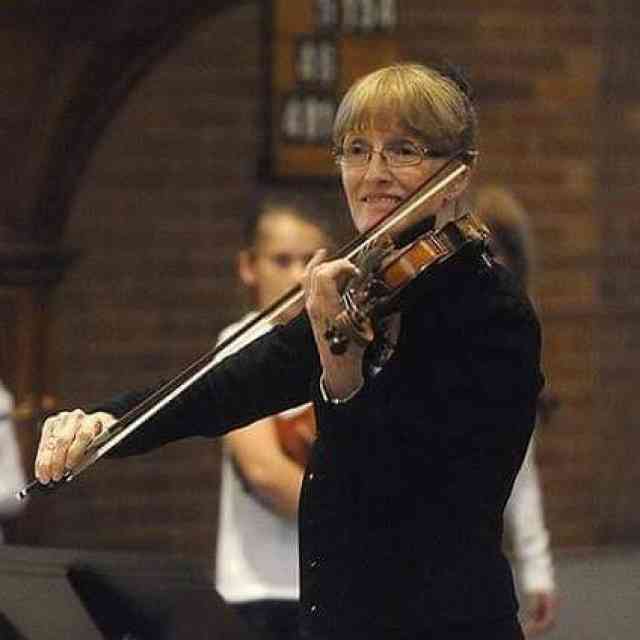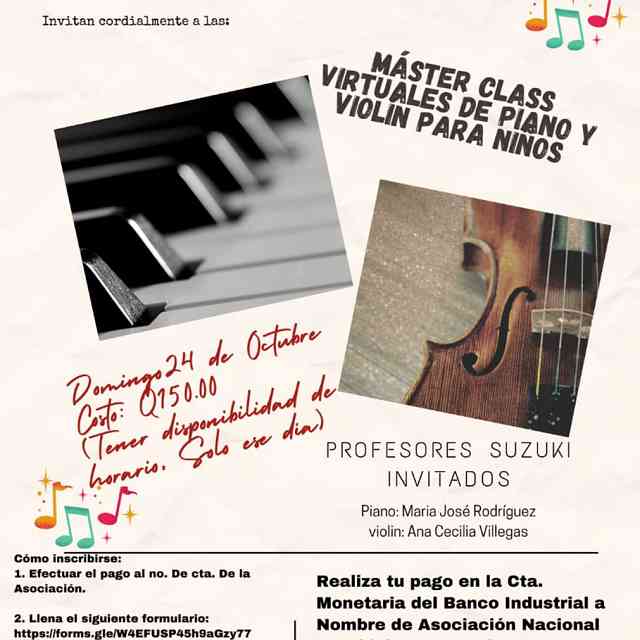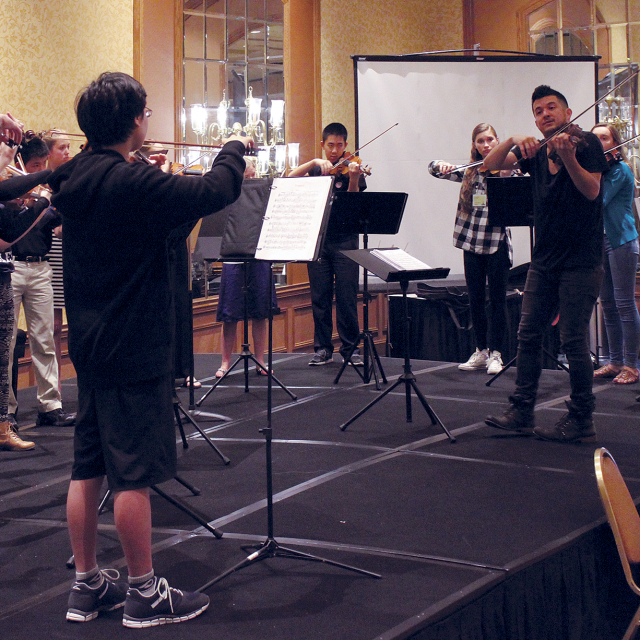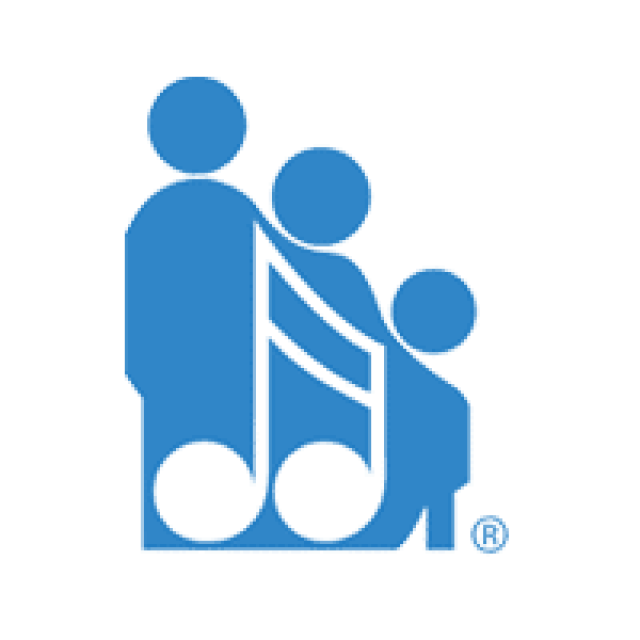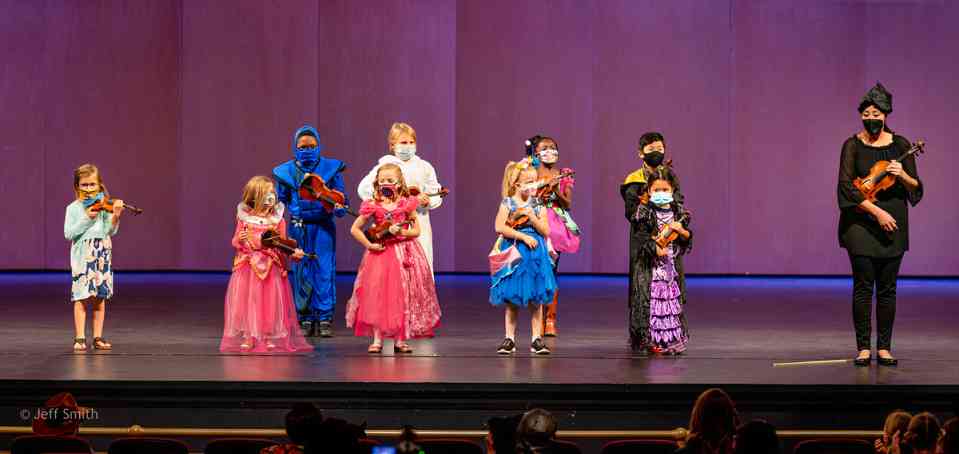
The Suzuki Association of the Americas is proud to welcome Ching-Yi Lin to the Board of Directors. Ching-Yi’s term on the board began on August 1, 2021. In addition to her responsibilities as a board member, Ching-Yi is an associate professor of violin at Western Kentucky University, where she teaches undergraduate and graduate violin students, violin pedagogy classes, and chamber music. She is also the executive director and founder of Bridging Cultures with Music, a nonprofit that pairs volunteers with English as a Second Language students to learn violin.
What instrument do you teach and how long have you been teaching?
I teach violin, and I enjoy teaching all things violin-related. In addition to my teaching at the college level and Bridging Cultures with Music, I also direct the WKU Pre-College Strings Program for youth ages 4-18. I started teaching during my undergraduate studies, so it’s been 20 plus years!
Do you have a favorite age group to work with?
I love working with the two far ends of the age spectrum. My main job is teaching in academia, which means I teach students ages 18 and older. I find it so rewarding to work with my college students because I know that by educating the next generation of teachers, I will get to see the little kids being taught well. But I also absolutely love teaching violin to children in the five- and six-year-old age group. I feel privileged to be able to complete the circle in my teaching, from beginning violin students to polished young teachers.
Where did your musical journey begin? Did you find violin, or did it find you?
I started playing the piano when I was four years old growing up in Taiwan. My grandmother was an amateur musician. She noticed that I had a good sense of pitch at a young age, so she recommended that I take piano lessons. I soon enrolled in Gu-Ting Elementary music school, and at the ripe young age of seven, I was required to pick an instrument to “minor” in. I chose the violin.
My family made a big change when I was twelve years old: we emigrated to America. Twelve years old is a difficult age for anybody to fit in; it was especially difficult for somebody who didn’t speak the English language to be immersed in this completely new culture. I thought the alphabet was just “C, D, E, F, G, A, B,” because that’s how I learned it through “do, re, mi.” I was really upset to find that there were so many other letters!
Music became an anchor in my life during my teenage and high school years. Once we moved to America, it wasn’t so easy to buy a piano, so I actually stopped playing that instrument for a while. I kept playing the violin because it was a traveling instrument. That was what carved a path for me in music, even if I didn’t know it at the time. Music became such a staple in my life that it never occurred to me that I would do anything else.
How did you become a part of the Suzuki community?
I learned how to play the violin using the Suzuki Method when I was a child. Once I realized I wanted to devote my life to teaching violin to children, I revisited the Suzuki Method to understand it from a pedagogical point of view. I had a good foundation in violin pedagogy through my training with Mimi Zweig at Indiana University, who I teach for during the summer months at Indiana University Summer String Academy. I was also very taken by the work of Edmund Sprunger, who I invited to teach a Suzuki Book One training at my university. The ten days that my college students and I spent taking the Unit One training with Ed gave me a deeper understanding of the Suzuki philosophy and encouraged me to incorporate it more fully into my own teaching. Ed really changed my life.
Tell me about your nonprofit organization.
Through the help of many individuals in my community, I founded an organization called Bridging Cultures with Music. This program offers students in the public schools’ English as a Second Language (ESL) classes free afterschool violin lessons. Our city has a large refugee population, and I discovered that partnering with the public school ESL teachers was a perfect way to reach them. The teachers in the program are university music major students, and they are assisted by volunteer violin students from our pre-college program. The idea for building this program came from my own experience as an English as a Second Language student; I remembered how isolating it was to be immersed with English speakers, and I wanted to create a space where people who otherwise would not have a chance to interact could come together through learning and teaching the violin.
How did you take your project from an idea to a living, breathing organization?
Anything is possible when you surround yourself with supportive people. I am a facilitator—so much of what I do is about building a team and choosing people who share the same vision. I strive to empower everybody to reach their own dreams, and I’m lucky enough to work with people willing to come and be a part of it. A lot of strength comes from surrounding yourself with like-minded people that share your dream and vision and giving them enough tools to help everybody be successful.
How have your community programs benefitted your college students studying music and education?
It’s exciting for them to have a hands-on teaching experience in an unconventional setting. I want to inspire my students to set up their own programs when they graduate. For example, one of my students got really excited about expanding the program to students in foster care homes, so I helped her set up a program with one of the local foster care organizations. My programs are about connecting people who otherwise wouldn’t actually come together, and helping them to understand each other better through the thread of music.
That’s really wonderful. Lastly, talk to me about your experience on the Board of Directors. What goals did you have going in and what kinds of perspectives do you bring to that work?
I have enjoyed meeting many new board members and spending time with the Suzuki teachers I have known for a while. I not only love the idea of “Every Child Can,” but also, “Every Teacher Can.” I wish to advocate for increased training at the university level and inspire more ways for college students to engage with the SAA. To be honest, I have not had a chance to advocate for my ideas because I came to serve on the board at a time of transition; we as a community are in a time of reflection and transformation. But I’m very inspired by how passionate every board member is and how passionate the membership is about the future of this organization. I’m excited to be a part of the future and honored to serve on this board.
I can’t speak for every board member’s personal feelings, but I can tell you that a sense of hope and excitement is palpable in every board meeting. The future of the SAA is bright, and we’re all confident in the direction going forward. I’ve appreciated the feedback I’ve received from Suzuki teachers, and every member’s patience and good faith throughout this transition.

